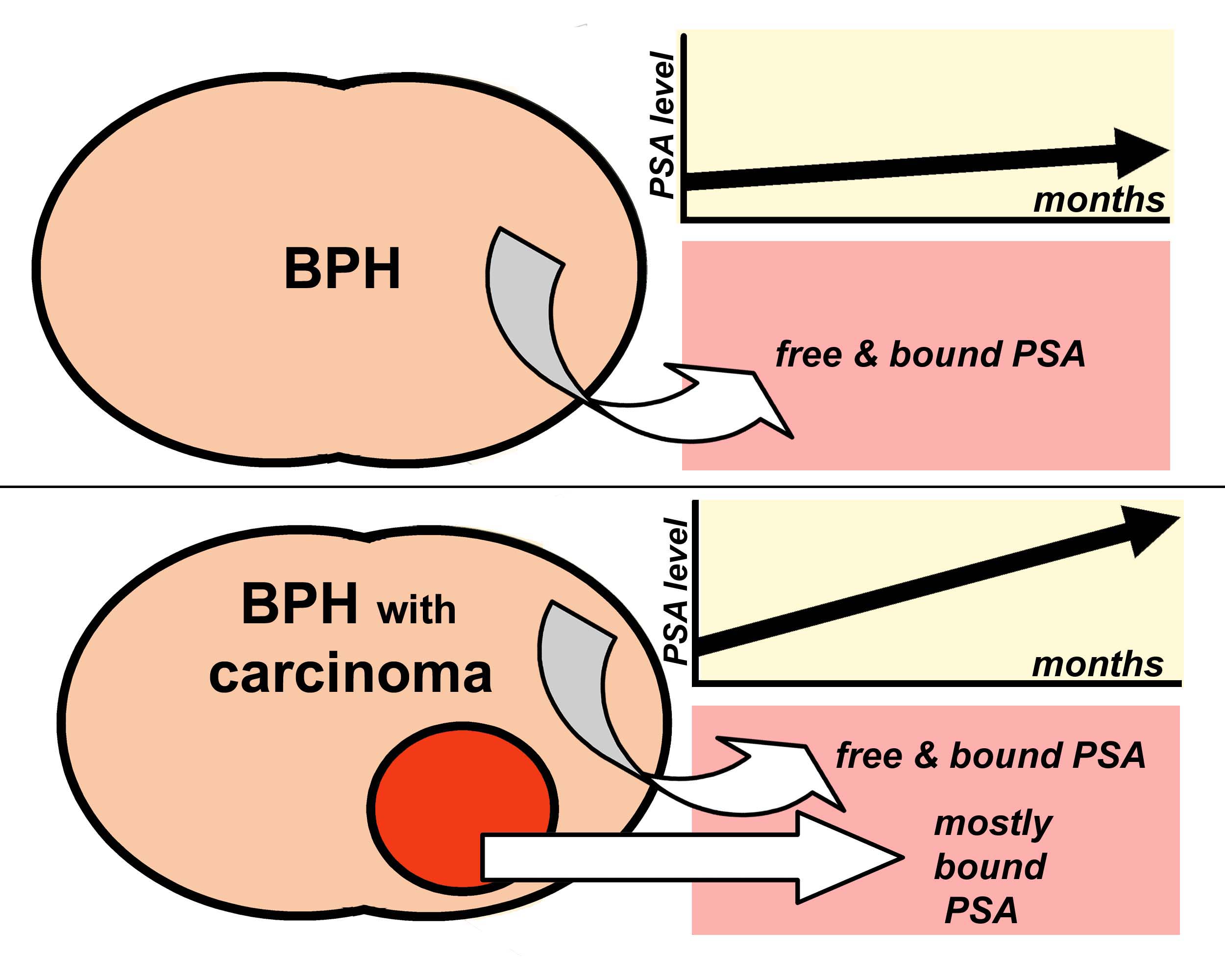 |
|
| Use of PSA velocity (increase over time) and free PSA to better detect prostate carcinoma in the presence of BPH | |
Tumor Markers
PSA monitoring
Measurement of prostate-specific antigen (PSA) has been an important part of the diagnosis and management of patients with prostatic carcinoma for almost two decades.
Stanford offers three separate PSA assays: total PSA, free PSA and ultrasensitive PSA. We continue to use the established cut-off of 4.0 ng/ml for total PSA.
The order for free PSA automatically includes total PSA and both results will be reported as well as the % free PSA. For outreach patients, there is also an option to order total PSA with reflex to free PSA (and calculation of % free PSA) if the result is >4.0 ng/ml.
Ultrasensitive PSA is a separate PSA order designed for patients who are being followed after prostatectomy. Even though we will be use the same single PSA assay (Hybritech), this continues to be a separate order so that we can report the result to two decimal places. After radical prostatectomy, PSA levels should fall rapidly and then remain “undetectable”.The new reference range for the ultrasensitive PSA result is the lower limit of reliable detection (<0.02 ng/ml). Post-prostatectomy PSA levels above 0.02 ng/ml may indicate recurrence or metastasis, especially if they continue to rise as the patient is closely monitored.

